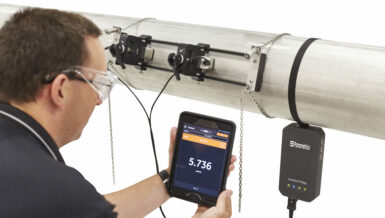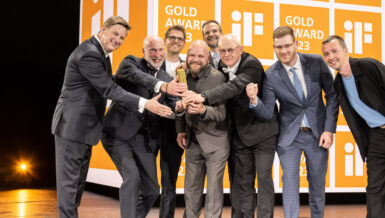Since thermal flow meters are dependent on the properties of the gas mixture, Bronkhorst is focusing the research on its mass flow meters, such as for instance the FLEXI-FLOW series, towards achieving gas-independent and consistently accurate measurement results.
Project of Gas Monitoring Module for Breath Analysis

In 2021, a project was launched between the University of Twente and Bronkhorst to explore the possibilities of using thermal flow sensors for both flow and composition measurement of gas mixtures. This collaboration is expected to yield a demonstrator of a gas monitoring module for respiratory devices, which could be used for personalized therapy for patients with respiratory and lung diseases (see figure 1).
The gas monitoring module’s task is to analyze various gases in exhaled breath to evaluate therapeutic solution possibilities. The system must precisely measure real-time concentrations of multiple gases while remaining cost-effective and maintaining a compact size.
MEMS-Based Thermal Mass Flow Sensors as a Potential Solution
The core of the gas monitoring module is a MEMS-based thermal mass flow sensor. These sensors have the potential to play a crucial role in treating respiratory diseases. They are small, fast responding, and cost-effective. However, several fundamental issues still have to be resolved, like the dependency of the output signal of the flow sensor on the type of gas and extracting both the flow rate and gas composition instantaneously.
Detecting Gas Type with a Thermal Conductivity Sensor
An initial design of the thermal flow and composition meter has been developed based upon modelling and understanding of physical transduction principles. This design was manufactured in the MESA+ cleanroom at the University of Twente and subsequently characterized.
Three pairs of wires are used as calorimetric flow sensors to measure the flow profile and flow direction inside a flow channel (see figure 2). An independent thermal conductivity sensor detects the gas type through a simple DC voltage measurement.

Validation through Measurements results
To measure thermal conductivity, gases with different properties were selected: helium (He), carbon dioxide (CO2), nitrogen (N2), and argon (Ar). Initial findings indicate good agreement between measured output voltages and theoretical calculations, enabling determination of flow rates.
Pure air was used as a test gas. Its thermal conductivity is determined from the measured voltage using a theoretical model. An empirical relation for the thermal mass flow sensor was derived, linking the gas’s thermal properties and flow rate. This relationship was used to measure flow rates by compensating for the actual thermal conductivity.
Conclusion and Future Prospects
Ultimately, the project suggests that a gas-independent thermal mass flow meter could become an essential component for pharmaceutical and biotech companies in realizing personalized medicine. Future measurements of gas properties such as density and heat capacity, as well as fast changing varying gas mixtures, are necessary to prepare the gas monitoring module for experimental validation in a clinical setting.






























